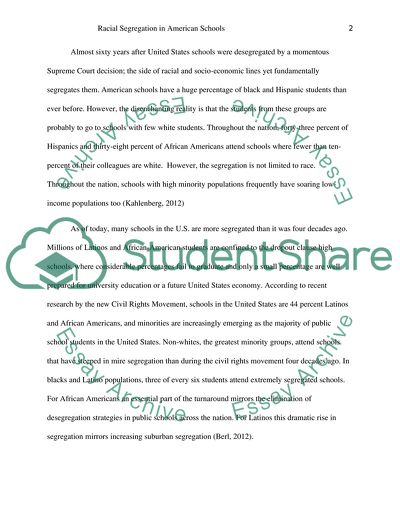Cite this document
(Racial Segregation in American Schools Annotated Bibliography Example | Topics and Well Written Essays - 1750 words, n.d.)
Racial Segregation in American Schools Annotated Bibliography Example | Topics and Well Written Essays - 1750 words. https://studentshare.org/sociology/1797445-racial-segregation-in-american-schools
Racial Segregation in American Schools Annotated Bibliography Example | Topics and Well Written Essays - 1750 words. https://studentshare.org/sociology/1797445-racial-segregation-in-american-schools
(Racial Segregation in American Schools Annotated Bibliography Example | Topics and Well Written Essays - 1750 Words)
Racial Segregation in American Schools Annotated Bibliography Example | Topics and Well Written Essays - 1750 Words. https://studentshare.org/sociology/1797445-racial-segregation-in-american-schools.
Racial Segregation in American Schools Annotated Bibliography Example | Topics and Well Written Essays - 1750 Words. https://studentshare.org/sociology/1797445-racial-segregation-in-american-schools.
“Racial Segregation in American Schools Annotated Bibliography Example | Topics and Well Written Essays - 1750 Words”. https://studentshare.org/sociology/1797445-racial-segregation-in-american-schools.


